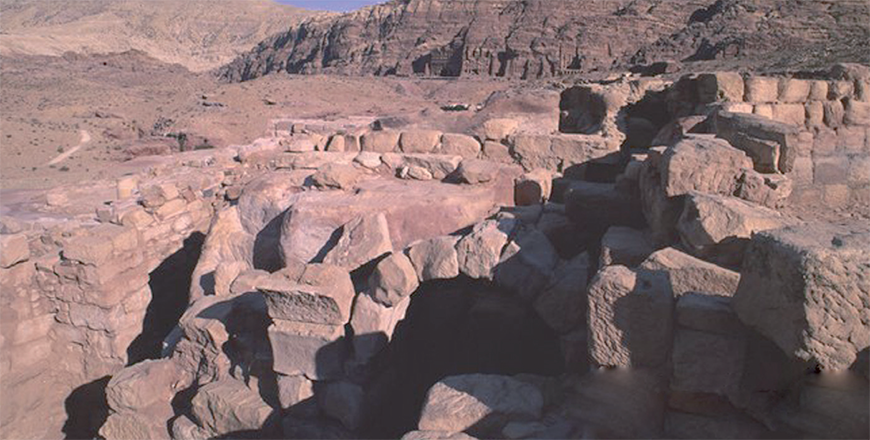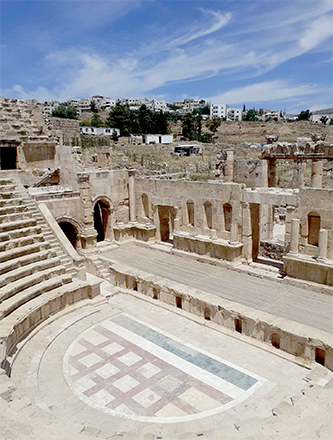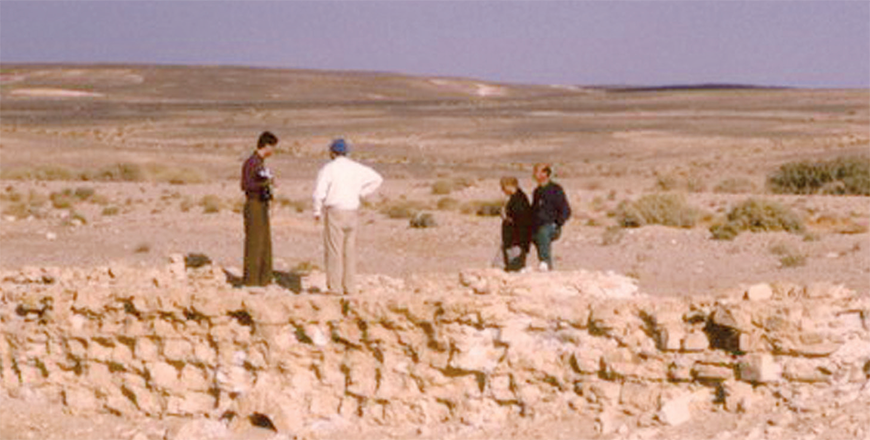You are here
Idumea’s Legacy: Exploring cultural landscape of Ancient Palestine
By Saeb Rawashdeh - Oct 07,2024 - Last updated at Oct 07,2024

Busayra, the administrative and political centre of the Edomite Kingdom (Photo courtesy of ACOR)
AMMAN — The Kingdom of Edom covered the territory of southern Transjordan and in later phases, parts of the Negev Desert during the Late Bronze Age and the Iron Age.
Historical records showed that it flourished between 13th century BC and 8th century BC and was destroyed in the 6th century BC by the Babylonians. The Edomites were ethnically similar to the Ammonites and Moabites and these groups shared religious practices.
"The Edomites benefitted from the trade routes running through the area," said the professor Craig Tyson from D'Youville University, noting that they also produced and imported copper. The Edomites traded with Egypt via Negev and also had economic and political ties with Mesopotamia.
The Edomites were mobile and when Assyria took over in 8th and 7th centuries BC, the Edomite Kingdom became its vassal. They are mentioned in the ostraca found in Arad, in the West Bank. According to more recent evidence, it testified that the state moved westward.
In recent decades, interest in the question of ethnic and cultural (including religious) diversity in ancient Palestine in Hellenistic-Roman times has grown dramatically. Hellenistic and Roman Palestine included many ethnic-cultural groups with several Greek cities, especially located in Transjordan.
Such is the case with the Edomites and Idumeans. After the conquest of Judah by the Babylonians, Edomites settled in the region of Hebron. They prospered in this new country, called by the Greeks and Romans "Idumaea" or "Idumea", for more than four centuries. Ancient historian Strabo, writing in first decades of the 1st century AD held that the Idumaeans, whom he identified as of Nabataean origin, constituted the majority of the population of southern West Bank.
Another main source for Idumeans are works of the another historian from the 1st century AD Flavius Josephus.
"Josephus' references are important to understand people past and how he wanted to present it to his readers. Second, all Josephus' other references to Idumea and the Idume in Antiquitates Iudaicae and Bellum ludaicum and Contra Apionem deal with Hellenistic and Roman history, but an essential distinction has to be made between the three works, as they were written at different times, and as such may reflect the author's different approach," said the historian Michal Marciak from Jagiellonian University.
In geographical term Idumea was an area which offered convenient approaches through mountain passes towards the West Bank, Marciak said, adding that in military terms, Idumea was an area where cities and fortresses were built to guard such approaches.
"Consequently, there can be no surprise that it was used by the Seleucids, since Idumea was an integral part of their state that time. In this context it is important to note that the military activity of Idumeans is not even vaguely hinted at on any of these occasions," the historian elaborated, adding that the second group of "Idumean" references points to direct hostilities between the Maccabees and Idumeans.
"Namely, it does not include any description of negative behaviour which could be attributed specifically to the Idumeans The only explanation for the outbreak of Maccabean-Idumean hostilities is formulated in Ant. XII 327, but this statement is extremely general, as it refers to the motivation of all peoples around the Maccabees to turn against them," Marciak said, adding that the conflict arose for political reasons.
In 112 BC- 108 BC, Idumea was incorporated into Hasmonean state by King John Hyrcanus.
Despite recent epigraphic discoveries (Aramaic Ostraca from Idumea) and archaeological excavations (particularly in Maresha), Josephus still remains the main source of knowledge on Hellenistic and early-Roman Idumea.
Related Articles
AMMAN — The scarce evidence from ancient sources represent basis for discussions on the Nabataeans and their kingdom, which controlled part
AMMAN — Syntheses of ancient Jerash and its urban spread are based largely on studies of monumental ruins, most of whose visible and imposin
AMMAN — Bayir was a water station and an old caravan post located in south-eastern Jordan.

















